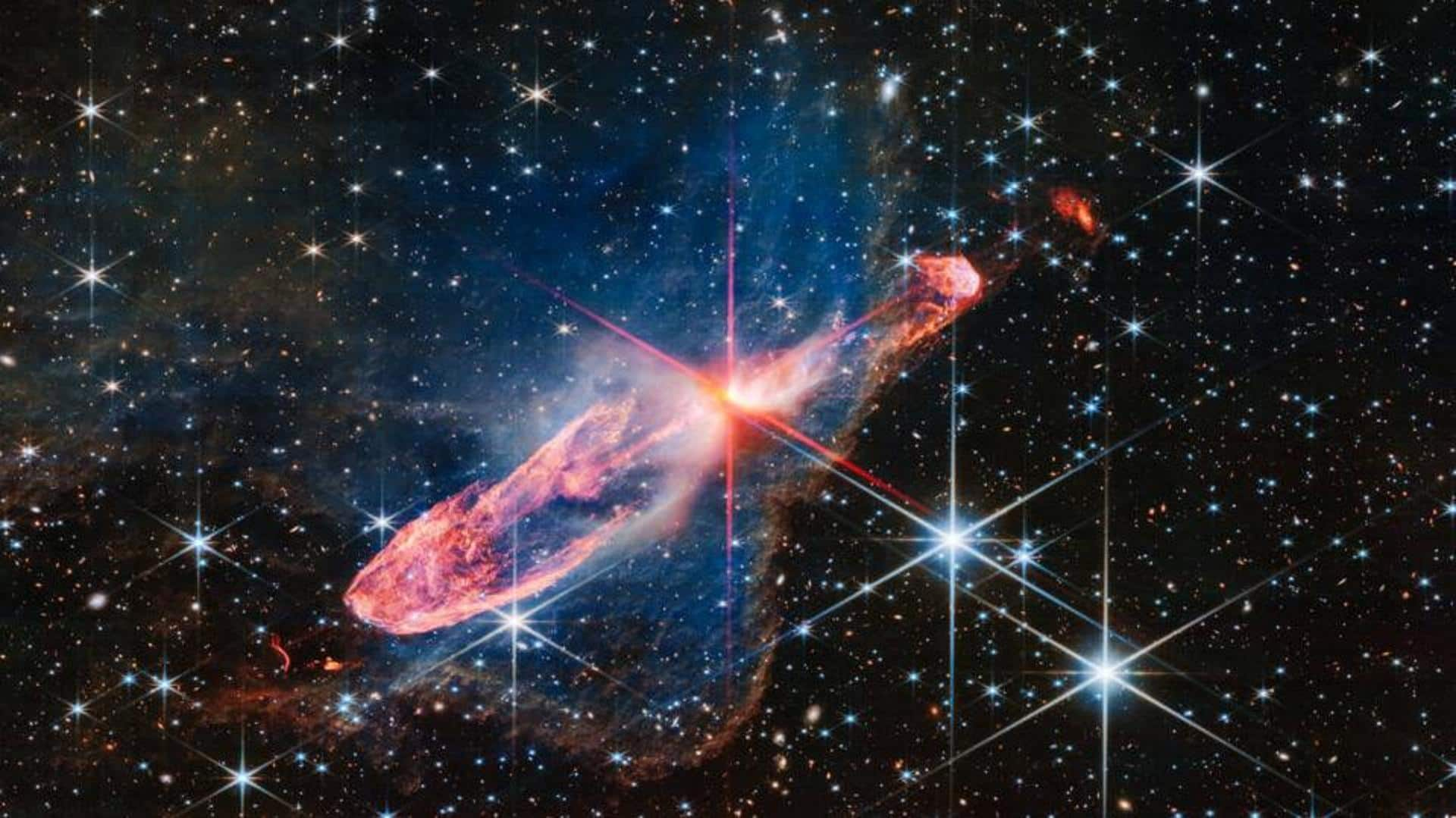
NASA's JWST drops striking image of actively forming stars
What's the story
The James Webb Space Telescope (JWST) has captured yet another spectacular cosmic sight. This time, the powerful telescope focussed its keen infrared vision on actively forming stars, known as Herbig-Haro 46/47. This star formation is happening in the Vela constellation, about 1,470 light-years away from us. The latest image exhibits a number of interesting features. Let's see what they are.
Context
Why does this story matter?
Herbig-Haro 46/47 stars are about a few thousand years old. They are at a relatively young phase on the cosmic timescale considering that stars typically take millions of years to fully develop. This makes them a wonderful cosmic target for gleaning insights into star formation, details like how much mass they gather over time, and how they eventually evolve.
Image
The stars are surrounded by dust and gas
The Herbig-Haro 46/47 stars are the main highlight of the newest Webb picture. These stars are actively forming within the glowing orange-white patch, right at the center of the bright pink spike in the image. They are located within a dense disk of gas and dust which are actually feeding the stars as they continue to gain mass and develop.
Feature
Ejections from the stars form distinctive lobes surrounding them
NASA specifically draws our attention to the "two-sided lobes" that branch out from the central star-forming region. The smaller right half is angled closer toward Earth while the left lobe faces away. These distinctive pinkish-colored lobes are made up of gas and dust that the stars ingest and expel into space as they develop. The fairly recent ejections are shown in blue.
Nebula
Jets light up upon interaction with the nebula
In fact, the dense regions of dust and gas, known as nebula, that is surrounding the central stars are what is causing the jets to light up. "As ejected material rams into the nebula... there is more opportunity for the jets to interact with molecules within the nebula, causing them both to light up," says the official NASA blog post.
Process
The jets are vital for star formation itself
Ejections are extremely important to star formation. The jets that are being released control much mass the stars ultimately gather. Interestingly, the shapes of the lobes change as the stars spew out new ejections, which then run into the existing ones, causing the "billowing pattern." However, these colorful lobes are bound to disappear when the Herbig-Haro 46/47 stars are fully developed.
Nebula
Several other stars and galaxies are seen in the background
It is worth mentioning that had it not been for Webb's powerful infrared capabilities, we would not have been able to observe such intricate details of the Herbig-Haro 46/47 stars, and the several other stars and galaxies strewn across the background. The telescope is designed to look through dense layers of dust and gas that shroud the star-forming region.